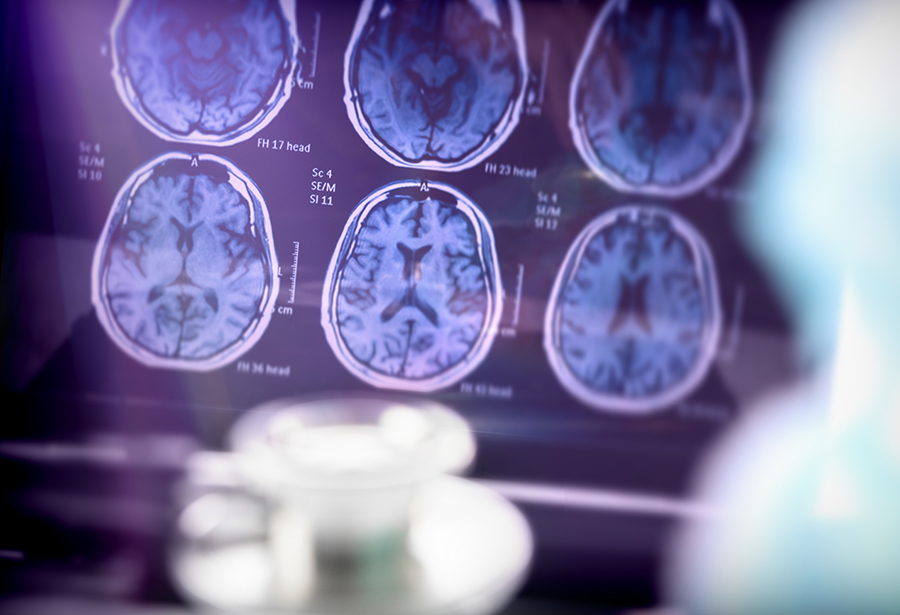
Brigham and Women’s Faulkner Hospital’s Beth Waters, MSN, RN, CPEN, Nursing Professional Development Program Manager for the Emergency Department, helps raise awareness of the risks of stroke and shares lifesaving information to prevent potential long-term devastating effects of stroke.
Stroke is a brain attack. It occurs when blood vessels in your brain, called arteries, are blocked or burst. The consequences of stroke can be long-term disability that includes difficulty walking and talking, and even death. In fact, stroke kills almost 130,000 of the 800,000 Americans who die of cardiovascular disease each year. That’s 1 in every 19 deaths from all causes. Anyone, including children, can have a stroke. Every year, about 610,000 people in the United States have a new stroke. Recovery time after a stroke is different for everyone—it can take weeks, months or even years. While some people recover fully, others who survive their stroke suffer long-term effects or lifelong disability.
There are many risk factors for stroke, many of which are beyond your control. These include your age, sex and ethnicity. But there are also habits you can change to lower your risk of stroke. Examples that raise your risk of stroke include smoking, drinking too much alcohol and not getting enough exercise. High cholesterol, high blood pressure and diabetes can also increase your risk of stroke. If you worry about your risk for stroke, talk with your provider about preventing or treating these chronic conditions.
Symptoms of stroke can be very subtle, so it is important not to overlook even the smallest changes in your health.
When it comes to stroke, BE FAST and call 911.
For those who have a stroke and survive, the long-term effects can include paralysis, weakness or both on one side of the body; trouble with thinking, awareness, attention, learning, judgment and memory; problems understanding or forming speech; trouble controlling or expressing emotions; numbness or strange sensations; pain in the hands and feet that worsens with movement and temperature changes; trouble with chewing and swallowing; problems with bladder and bowel control; and depression.
The key to minimizing these long-term effects is timely treatment. The sooner you arrive at the hospital, the sooner brain-saving interventions can begin.
At Brigham and Women’s Faulkner Hospital, treatment begins the moment our Emergency Medicine team suspects someone is arriving with stroke-like symptoms. Once EMS is on the scene, they notify us of a potential stroke patient. This allows our physicians and nurses to get ready for your arrival. Having a CT scan of the brain happens within minutes of your arrival. The CT scan helps us to see if there is an obstruction in the blood vessels or if a blood vessel has burst. Depending on which it is, the treatment is different. If a blood vessel has burst, then surgical intervention is needed and a transfer to Brigham and Women’s Hospital, which is a Comprehensive Stroke Center, would be necessary. If the team suspects an occlusion and oxygen is not getting to the brain, medication can be given right away to dissolve that clot. This medication works quickly and in many cases the symptoms begin to resolve right away.
The key is timely treatment. Our goal is to give this medication within 1 hour of your arrival to the Emergency Department. It must be given within 4.5 hours of the symptom onset to be effective, but the sooner the better.
Rehabilitation after a stroke begins in the hospital, often within a day or two after your stroke. Rehabilitation helps ease the transition from hospital to home and can help prevent another stroke. After a stroke, your rehabilitation may include:
After discharge from the hospital, depending on the severity of your stroke, you may be moved to a long-term rehabilitation hospital or you may be able to return home. At Brigham and Women’s Faulkner Hospital, our Stroke Support Group is available to patients and their care givers. The group provides a place for you to connect with others who can understand your struggles and triumphs. To learn more, call 617-983-4498.
Remember, calling 911 is always the right thing to do when you experience any symptom of stroke. Calling 911 and getting EMS care could have a lasting impact on your health.
Looking for more news from BWFH? Go to News to find articles about health, updates to our programs and services and stories about staff and patients.
Go to News